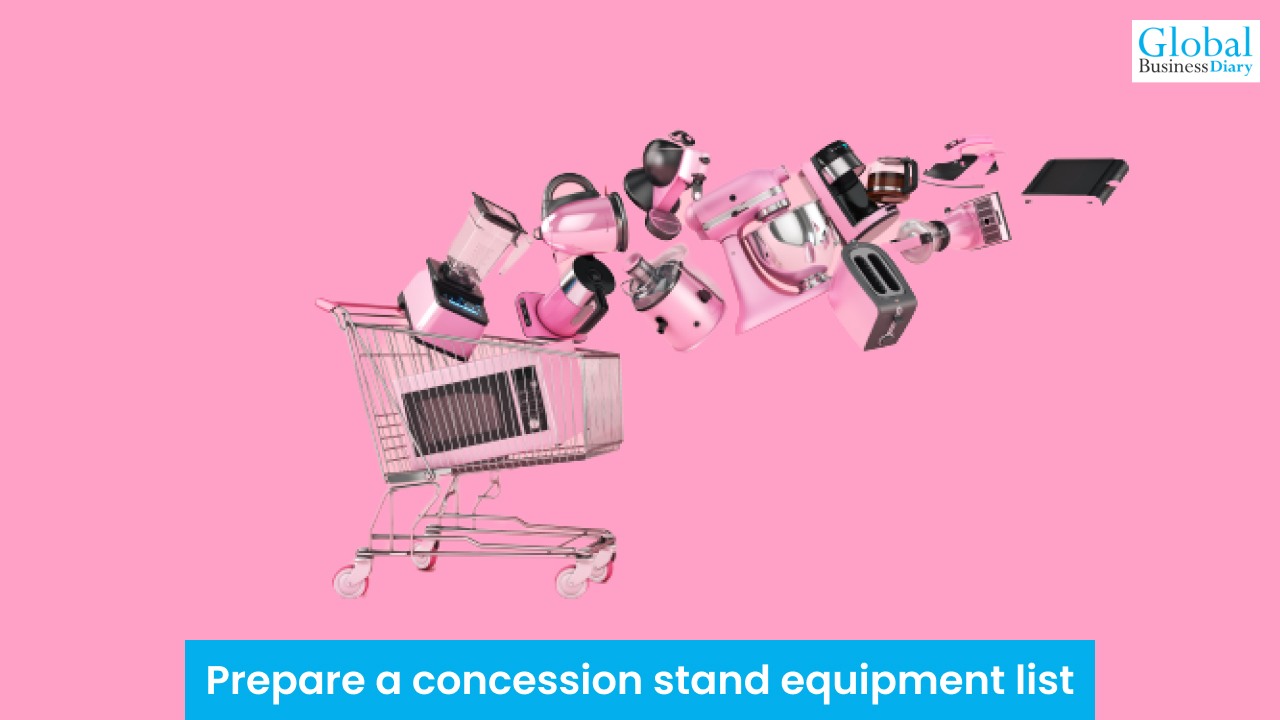How To Start A Concession Stand Business? – A Complete Guide

Do you want to commence your Concession stand business?
Are you ready with your business plan and its prospect? If not, you have to understand the basics of this business to grow your business in the correct direction. You have to work on your plans well before establishing your business.
One of the beneficial aspects of the Concession business is that it requires lower startup costs. Now, If you want to increase your profitability in the food service industry, then the application of the concession stand can work well in your friend.
The Concession stands location will determine the ongoing success of your business. You have to chalk out a full-proof strategy to increase your profitability.
How Much Does A Concession Stand Cost?
Its cost depends on two factors:-
- Do you want to buy a used cart or,
- You want to build it from scratch.
A new medium-sized concession stand will cost you around $11000 -$21000. On the other hand, if you want to use or purchase a well-equipped concession stand, it will cost you around $6000-$45,000.
How Can You Start Your Concession Stand Business?

You can follow specific lucid and straightforward steps to start your concession stand business with ease. Write your business plan first before standing your foodservice business. Keep the business plan as simple as possible.
1. Develop A Concession Stand Concept
Your Concession stand concept and the menu will help you determine what type of cart you require to get the ideal location for your business.
A concession stand can help you get pre-made snacks and creative gourmet cuisine for your business.
You must have arrangements in your concession stand to sell the fresh cuisines, and the gourmet stuffs to your buyers. Try to keep your food items in proper condition.
2. Write A Concession Stand Business Plan

Once you get a general idea about what kind of business you want to operate, now it’s time to figure out your business plan.
For your concession stand, your business plan will act like a blueprint upon which the growth trajectory of your business will depend.
It will help you make the right kind of investments without wasting too much money and time.
A solid business plan for your concession stand will help you to gain most of the crowdfunding and other investors as they can gain a clear insight into your business growth in the upcoming days of your business.
Also Read: How To Create A Powerful Business Models For Your Business
3. Arrange Funding For Your Concession Stand
With a proper business plan in place, you will get the right idea of how much money you require for your business.
If you want to launch a small concession stand business, your funding is enough to finance it. On the other hand, you will require money from outside sources if you want to start an extensive concession stand.
Some of the best sources for the concession stand funding are as follows:-
- Investors:- You can pitch your business plan to your investors to arrange money.
- Crowdfunding: It allows a large group of people to make investments in your business if it sounds profitable and worth investing.
- Loans: You can collect the funds or the loans from the banks or from other sources that make loans available for investments.
4. Make A Purchase Of Your Concession Stand
You can purchase your concession stand after having your business plan and funding in place. Now you need to decide whether you want a trailer, short-range, and stationary stand for your business.
It will affect several factors, such as what kind of stand you purchase, the type of location you want, and the laws applied to this place.
A place where there is lots of rush of people like a sports stadium or movie theatre can help you get more customers for your business.
5. Get The Essential Permits & Licenses

Like any other business, you also need permission and licenses for running your concession stand business successfully. Here I will mention some of the standard licenses and permits you require to start your business. Some of them are as follows:-
- Food manager certification.
- Certificate for food handling.
- License for Food Vendor.
- Employer identification number.
- Sales & Use tax permit.
These are some of the standard permits and licenses you will require for starting your concession stand business. Depending on your jurisdiction of the place, the law may change or alter. You can take a note of that thing for your own good.
You can also incorporate your business with an LLC and you would require a registered agent in your state. For instance, if you are in Texas, you will require a registered agent in Texas for all kinds of legal correspondence.
6. Select The Food Storage & Preparation Equipment
Depending upon the menu and the type of food you will serve to your target audience, you have to select the types of equipment which will suit you better. Some food items require the perfect temperature and pressure to keep the food quality intact.
Some of the standard equipment’s which are primarily required for the business are as follows:-
- Warming & foid holding equipment.
- Sausage and Hot dig equipment.
- Ventless Fryers.
- Griddles.
- Popcorn machines.
- Cotton candy Machines.
These are some of the types of equipment you may require for your concession stand business.
Also Read: Top 7 Best Startups Revenue Model That Will Grow Your Business
7. Prepare A Concession Stand Equipment List

To make your foodservice business run smoothly, you have to prepare the concession stand equipment list. There are certain everyday disposable you will require in the daily affairs of your business like cups, bowls, trays. Fryer baskets, cutlery, and many more.
Some standard equipment which all types of concession stand require are as follows:-
- Cash registers.
- Coin Dispensers.
- Aprons.
- Snacks & Drinks.
- Signs.
- Cooking equipment.
- Serving equipment.
Final Take Away
Hence, if you want to run your Concession stand business properly, you have to make the required arrangements mentioned in this article. Then, you can feel free to share your views and opinions about the important deals for commencing a concession business.
It is quite natural that we may have missed some of the crucial points essential to running these types of business smoothly. You can share your comments with us to provide you with better information on this business later.
More Resources:













